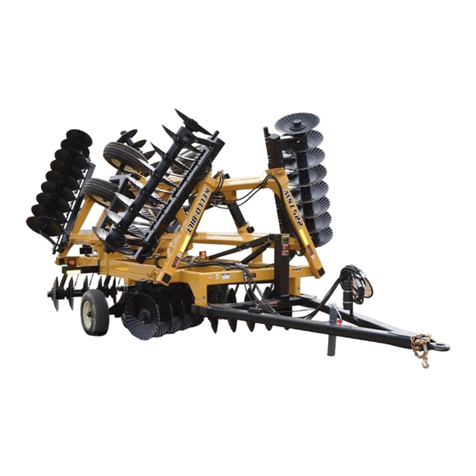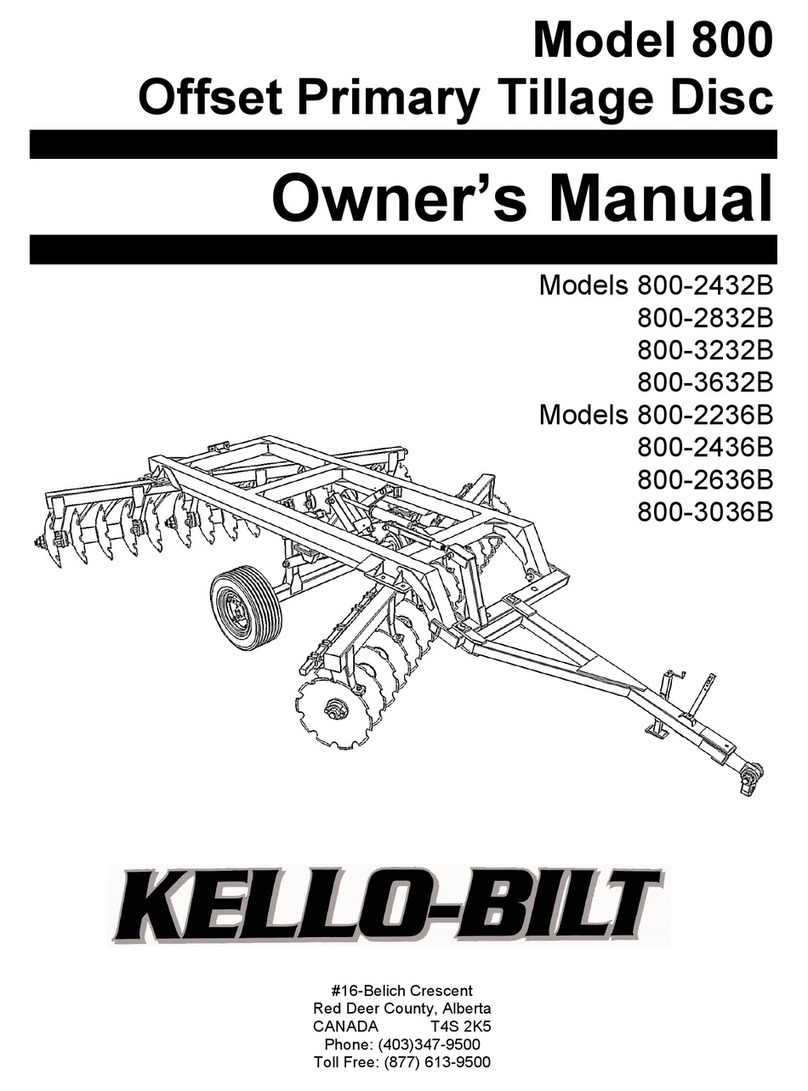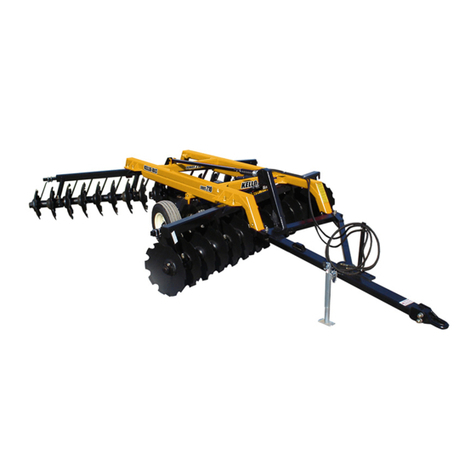
Checklists
PREDELIVERY CHECKLIST: After the disc has been completely assembled and lubricated, inspect it before
delivery to the customer to ensure proper operation. Check off each item of inspection in the list as it is found
satisfactory.
□ The disc has been assembled according to instructions and all nuts and bolts are present and tight.
□ All grease fittings are installed and the disc has been lubricated.
□ Tires are properly inflated and wheel lug nuts are present and properly torqued.
□ Disc gangs rotate freely without dragging on scrapers.
□ Check all pins to make sure retaining hardware is in place.
□ Touch up paint damage due to shipping and assembly.
□ Connect disc to tractor drawbar, connect hydraulic hoses and check the hydraulic system for leaks and
proper operation of the hydraulic cylinder.
□ Safety chain is attached. SMV sign is installed and visible from the rear of disc.
□ Light Kit is installed and operating correctly. All safety decals are present and legible.
□ This disc has been checked and to the best of my knowledge, is ready for delivery to the customer.
Set-Up Date _________________ Signature f Assembly Pers n _________________________________
DELIVERY CHECKLIST: The following list is a reminder of important information that should be conveyed
directly to the customer upon delivery of the disc. Check off each item as it is fully explained.
□ Advise customer the life expectancy and performance of this, like any other machine, is dependent on
regular lubrication and maintenance as described in this manual.
□ Explain the importance of safe and proper operation of the machine. Point out decals warning the operator
of the dangers of unsafe operation procedures and conditions.
□ The customer has been told to keep all bolts tight.
□ When the disk is transported on road or highway at night or during the day, accessory lights and devices
should be used for adequate warning to operators of other vehicles. Replacement safety lights and safety
devices are available from your Kello Bilt dealer. In this regard, suggest customers check their local
governmental regulations.
□ Insure completion of the Delivery and Warranty Registration forms, listing the Serial Number of the
machine.
□ Explain the Warranty
□ Show the customer how to hitch the machine and operate the controls relating to the machine.
□ Explain the adjustments for proper operation of the disc.
□ Advise use of the safety chain.
□ Give the Operators Manual to the customer and explain all operating adjustments and lubrication fully.
□ To the best of my knowledge, this machine has been delivered ready for use and the customer has been
fully informed as to its proper care and operation.
Set-Up Date _________________ Signature f Delivery Pers n __________________________________
6






























